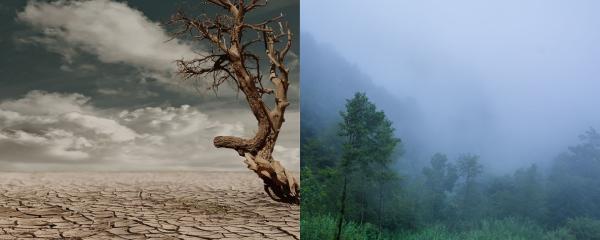
IIT Palakkad study shows how different indices used to predict drought combined with effects fof climate change can lead to different climate predictions for the future

IIT Palakkad study shows how different indices used to predict drought combined with effects fof climate change can lead to different climate predictions for the future
When we think of diseases that come to us from animals, rabies and AIDS are the most common ones that pop into our heads. Rabies is one of the most common viral zoonotic infections. Some of the widely known facts about rabies are that it makes you a slobbering, aggressive madman, it’s acquired by the bite of an infected dog and that it kills you.
Researchers from Washington University, St. Louis, USA surveyed Indian households to determine the ease of obtaining education and factors that hinder the process, in the country.
Scientists from the Indian Institute of Science Bangalore devise a computational model to study how cooperation evolves in natural systems - from cells to large mammals. The study finds mobility, which was largely ignored before, plays a key role in the evolution of cooperation. Understanding mobility of cells in a medium could help us understand better the spread of cancer.
In a new study, scientists have found a revegetated coal mine to be an excellent site for long-term storage of carbon.
Coal mining was once the backbone of our energy requirements for the country. Even today, India is the fourth largest producer of coal and has the fifth largest coal reserves in the world. However, once coal has been extracted from a mine, the mines are usually discarded or converted into other industries or tourist attractions.
Captive elephants in the country are used for a range of tasks. From hauling timber in the forests to blessing devotees in the temples, they do it all. In a first-of-its-kind study by researchers at the A.V.C. College, Mayiladuthurai, Tamil Nadu, and Dharmapuram Gnanambigai Government Arts College for Women, Mayiladuthurai, have explored how being forced out of their natural and instinctive behaviour affects these majestic megafauna.
On 26th of January 2001, India was gearing up to celebrate the country’s 51st Republic Day, when an event that lasted a little longer than 2 minutes, devastated the country. Kutch region in Gujarat was hit by a 7.7 magnitude earthquake. The death toll was estimated to be around 13,000, with wide scale devastation to property. The incident flattened many villages and destroyed many historic and heritage buildings.
Life as we know it on Earth is possible because of water. Hence, the presence of water on our neighbouring ‘red planet’, Mars, was an important discovery. Taking forward the search for water on Mars, scientists from the Luleå University of Technology, Sweden, Sharda University, India, Instituto Andaluz de Ciencias de la Tierra, Spain and Centro de Astrobiología, Spain, have now discovered the widespread presence of liquid water on Mars using the latest technology.
Humans have used nanoparticles since antiquity. Stone age workers, artists during the renaissance, and ancient metallurgists have all used nanoparticles either for decorations or to enhance the properties of materials.
Responsible for 1.5 to 5 million deaths per year, around the world, Diabetes mellitus is a very serious disease. India is considered the diabetes capital of the world with as many as 50 million people suffering from type 2 diabetes. This World Diabetes Day, the Research Matters team caught up with Dr. Milind Watve, a professor at the Indian Institute of Science Education and Research Pune and an expert in the field, to find out about the new insights into how better to treat the disease.
The Red Panda (Ailurus fulgens) is an animal with soft reddish-brown fur, is only seen in the temperate forests of the Himalayas that includes parts of India, China, Nepal, Bhutan and Myanmar.